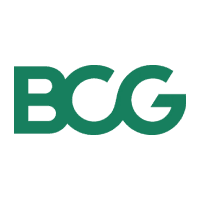Prepare

Set your climate ambition
Should you comply, compete, lead, or shape?
Every company should aim to reach Net Zero by 2050 at the latest. To achieve this goal, your company can choose a specific climate ambition for its net-zero journey: comply, compete, lead, or shape.
With an understanding of the why, what, and how, creating clarity on your level of ambition is a critical next step in your decarbonization journey and will help you mobilize your organization.
BCG’s Comply-Compete-Lead-Shape (CCLS) framework is a helpful tool in this regard. The CCLS framework defines four ambition levels relative to your peers (as seen in Figure 8), which may be applied to any sustainability topic –typically ones of high materiality.

Figure 8: CCLS in detail. Source: BCG analysis.
There are three steps to defining your company’s climate ambition along the CCLS framework for each material topic (e.g., Scope 1+2 emissions, Scope 3 emissions, water, biodiversity, etc.):
1. Assess how your key competitors are positioned
Based on peer targets, actions and more, define what comply, compete, lead, and shape (CCLS) mean in your industry, and position your peers along the CCLS framework. This should be done using information from Sections 2.2 and 2.3. See Figure 9 for a sample positioning of competitors.

Figure 9: Competitor positioning in CCLS framework. Source: BCG analysis.
2. Determine where your company is operating currently
Place your company within the CCLS framework; once again, information from Sections 2.2 and 2.3 may be helpful in this process.
3. Define your ambition level – comply, compete, lead, or shape
To inform your positioning, you should consider:
There are other approaches that can help companies define their ambition. For example, the Science Based Targets initiative (SBTi) Corporate Net-Zero Standard requires that companies commit to emissions reductions consistent with keeping global temperature increase to 1.5°C. This includes guidance and recommendations to set specific targets across Scopes 1-3, renewable energy, and supplier engagement (1).
The Climate Group also has campaigns to promote corporate sustainability by switching to 100% renewables, fully converting fleets to electric vehicles, and improving energy productivity, via its RE100, EV100, and EP100 programs, respectively. Signatories to these can receive guidance on how to pursue these actions (2).
Other tools include current and future environmental initiatives from the Science Based Targets Network (SBTN), such as their science-based targets for nature (3); and the sector-specific expectations of the Climate Action 100+, the world’s largest investor engagement initiative on climate change (4).
These different approaches and tools can be used in combination. For instance, using the CCLS framework is often informed by how industry peers adhere to SBTi’s Corporate Net Zero standard.
With clarity on your ambition along material topics, your company will be well-prepared to mobilize its workforce in support of realizing its ambition and ultimately achieving Net Zero. For detailed information on how to set targets related to your climate ambition, see Set target.